General News
Xmas Coffee Morning - 3rd December 2016
21st October 2016
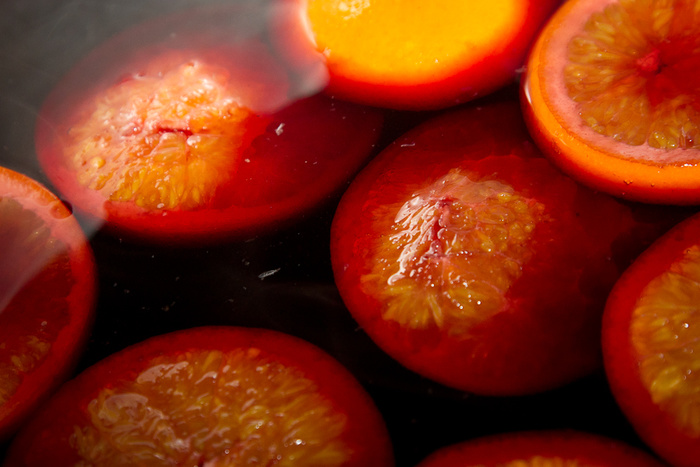
The annual Xmas Mulled wine and coffee morning is scheduled for 3rd December at the trading hut, starting at 10.30 am. For all those that desire a break from all the hassle of christmas preparation, would prefer a little sup in the company of like minded plot holders, and avoid the possibility of shopping in the newly developed Bond Street ( and in the process undoubtedly parting company with wads of cash) this is definitely the event for you, and it's entirely free. (We do hold a raffle during the morning).
The highlight of the morning is the now legendary Mulled Wine prepared by Tony Holbrook. The secret recipe, even more faithfully guarded than some well known fizzy drink, or chicken coating, will be once again bubbling away at the trading hut awaiting your copious consumption. Additionally there is the small matter of awarding the trophies for the annual allotment competition winners.
Please support the association, and absolutely etch this date in your diary. We look forward to seeing you.
21st October 2016

The annual Xmas Mulled wine and coffee morning is scheduled for 3rd December at the trading hut, starting at 10.30 am. For all those that desire a break from all the hassle of christmas preparation, would prefer a little sup in the company of like minded plot holders, and avoid the possibility of shopping in the newly developed Bond Street ( and in the process undoubtedly parting company with wads of cash) this is definitely the event for you, and it's entirely free. (We do hold a raffle during the morning).
The highlight of the morning is the now legendary Mulled Wine prepared by Tony Holbrook. The secret recipe, even more faithfully guarded than some well known fizzy drink, or chicken coating, will be once again bubbling away at the trading hut awaiting your copious consumption. Additionally there is the small matter of awarding the trophies for the annual allotment competition winners.
Please support the association, and absolutely etch this date in your diary. We look forward to seeing you.
Team effort makes light work of scaffold boards
28th August 2016
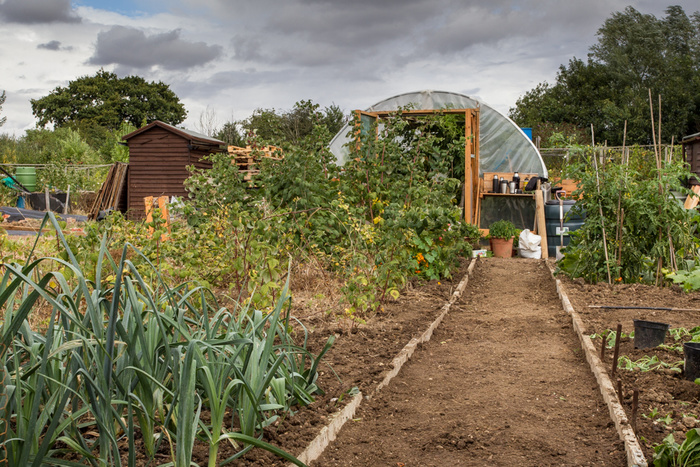
I am conscious that there has been a little bit of a broadcasting gap in relation to Project63, and hope that this small piece will bring everything up to speed.
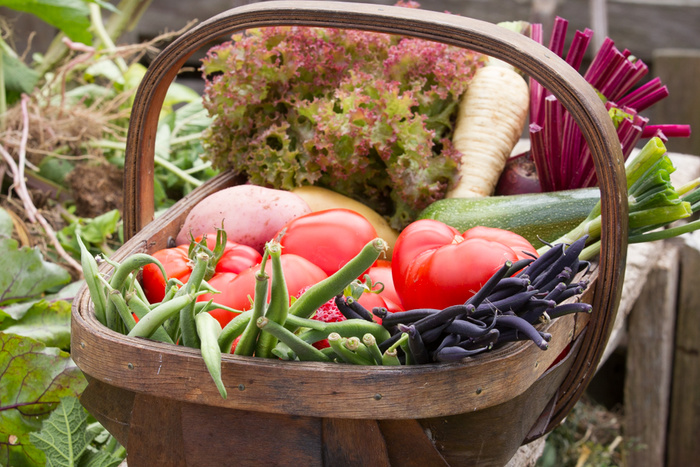
The project is now producing 3-4 trugs of vegetables every week, supplemented with generous donations from other Association members lifts the amount which is delivered to our chosen charity. Derek has kindly strengthened the door latch on the poly tunnel,and our good friend Chris,(who has seemingly been avoiding us for some time for fear of the next allotment 'would you mind if') kindly fitted three fronts to the composting bins that he built earlier in the year.
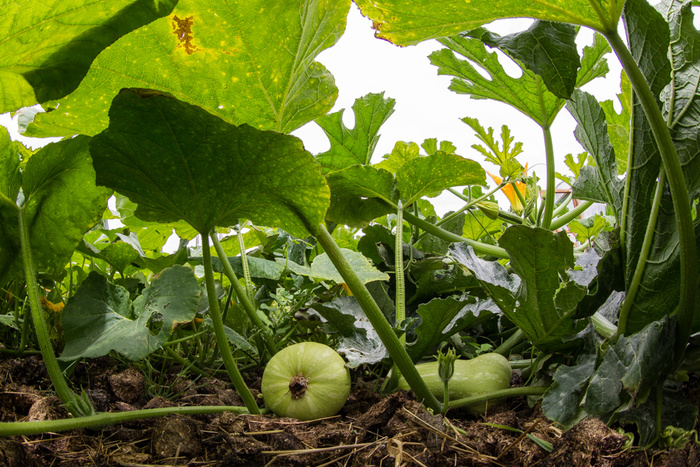
All of the potatoes have now been dug up, and the area dug over, manured and rotivated, the courgettes have been prolific, and the squashes are now maturing nicely as is the small square of sweet corn (duly protected from badgers!)
In the poly tunnel, peppers, aubergines, cantaloupe melons, tomatoes and chillies seem to be thriving, but the experiment with stuffing cucumbers doesn't seem to have delivered. Despite prolific growth, virtually taking over most of the tunnel, there is little evidence of anything that could even remotely be stuffed, and it may just be back to the drawing board with this particular item.
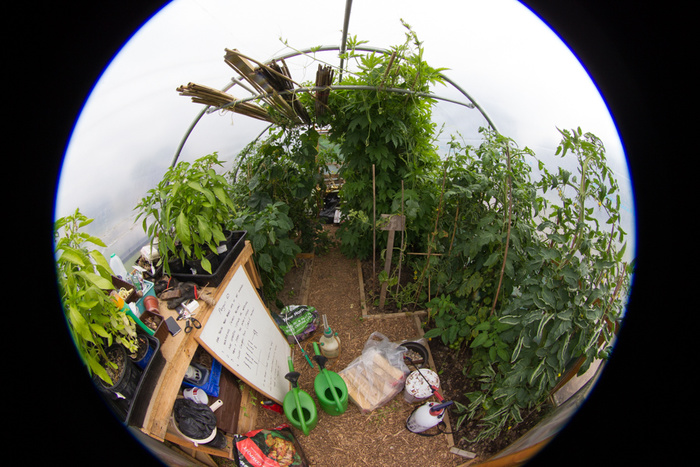
Bank Holiday weekend has seen plenty of activity on the plot, with the generous and valuable assistance of Brian and his team from the Community Payback Scheme. Earlier in the year S&C Scaffolding kindly donated over 480' scaffold boards, which have laid dormant waiting to be laid around the perimeter of the plot, and also to mark clearly the pathway through the centre.
Brian and his team kindly agreed to assist. A few blistering weeks of sun, and very little sign of rain, meant the task of digging 7 inch trenches all around and through the centre of the plot was going to prove pretty daunting. On Saturday, with everywhere else in the country receiving an absolute deluge, and Chelmsford missing out, all the boundaries were heavily watered with can after can to try and ensure that the area to be dug was at least manageable.
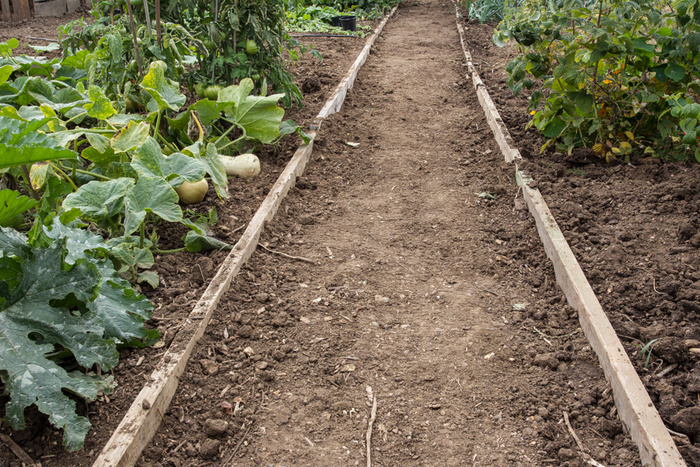
The team duly got stuck in on Sunday, and with further watering and loads of energy and effort, the ground was excavated, boundary boards placed and staked, tidying up the perimeter and defining the area of project 63. A huge vote of thanks to Brian and the team for all of their effort and input, which otherwise would have taken weeks and weeks to complete.
28th August 2016
In: Project 63

I am conscious that there has been a little bit of a broadcasting gap in relation to Project63, and hope that this small piece will bring everything up to speed.

The project is now producing 3-4 trugs of vegetables every week, supplemented with generous donations from other Association members lifts the amount which is delivered to our chosen charity. Derek has kindly strengthened the door latch on the poly tunnel,and our good friend Chris,(who has seemingly been avoiding us for some time for fear of the next allotment 'would you mind if') kindly fitted three fronts to the composting bins that he built earlier in the year.

All of the potatoes have now been dug up, and the area dug over, manured and rotivated, the courgettes have been prolific, and the squashes are now maturing nicely as is the small square of sweet corn (duly protected from badgers!)
In the poly tunnel, peppers, aubergines, cantaloupe melons, tomatoes and chillies seem to be thriving, but the experiment with stuffing cucumbers doesn't seem to have delivered. Despite prolific growth, virtually taking over most of the tunnel, there is little evidence of anything that could even remotely be stuffed, and it may just be back to the drawing board with this particular item.

Bank Holiday weekend has seen plenty of activity on the plot, with the generous and valuable assistance of Brian and his team from the Community Payback Scheme. Earlier in the year S&C Scaffolding kindly donated over 480' scaffold boards, which have laid dormant waiting to be laid around the perimeter of the plot, and also to mark clearly the pathway through the centre.
Brian and his team kindly agreed to assist. A few blistering weeks of sun, and very little sign of rain, meant the task of digging 7 inch trenches all around and through the centre of the plot was going to prove pretty daunting. On Saturday, with everywhere else in the country receiving an absolute deluge, and Chelmsford missing out, all the boundaries were heavily watered with can after can to try and ensure that the area to be dug was at least manageable.

The team duly got stuck in on Sunday, and with further watering and loads of energy and effort, the ground was excavated, boundary boards placed and staked, tidying up the perimeter and defining the area of project 63. A huge vote of thanks to Brian and the team for all of their effort and input, which otherwise would have taken weeks and weeks to complete.
Thank You to Brian and Team
28th August 2016
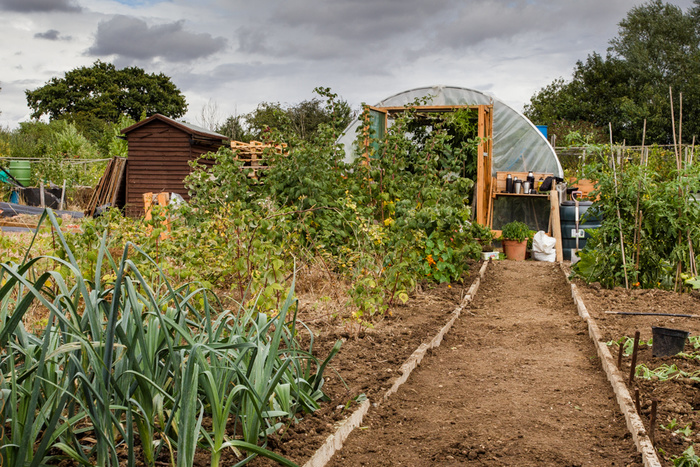
On behalf of the Allotment Association we would like to thank Brian and the team from the Community Payback Scheme for their effort and energy over the last few weeks. Over the course of the last two - three Sunday's Brian and the team have tidied, weeded and trimmed all round the trading hut and cabin, and then kindly took care of the ever increasing volume of nettles and other growth around the manure and chippings point at the base of the site.
This Sunday, the team got stuck into project 63, and dug 7 inch trenches all round the perimeter and laid the scaffold boards donated by S&C Scaffolding, and then created a pathway through the centre of the plot. (further information on the project 63 blog).
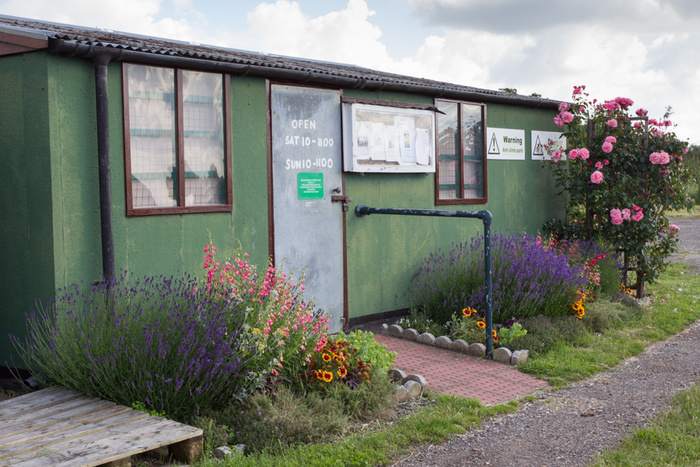
We would like to thank Brian and this team for the all the energy and effort involved, which is hugely appreciated.
28th August 2016

On behalf of the Allotment Association we would like to thank Brian and the team from the Community Payback Scheme for their effort and energy over the last few weeks. Over the course of the last two - three Sunday's Brian and the team have tidied, weeded and trimmed all round the trading hut and cabin, and then kindly took care of the ever increasing volume of nettles and other growth around the manure and chippings point at the base of the site.
This Sunday, the team got stuck into project 63, and dug 7 inch trenches all round the perimeter and laid the scaffold boards donated by S&C Scaffolding, and then created a pathway through the centre of the plot. (further information on the project 63 blog).

We would like to thank Brian and this team for the all the energy and effort involved, which is hugely appreciated.
Notice of AGM - 8th October
23rd August 2016
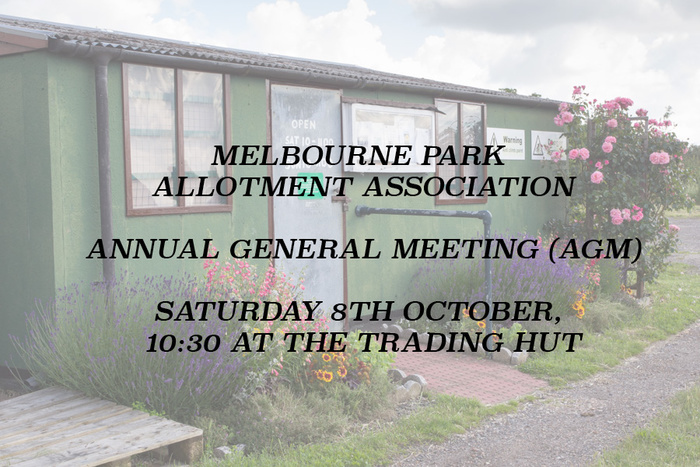
The Melbourne Park Allotment Association reminds all members of the Annual General Meeting to be held at the Trading Hut on Saturday 8th October, 2016, commencing 10.30 hours.
Whilst it may not be the most glamorous event that we hold, it is none the less a very important date in the diary, which allows a viewpoint to be expressed in terms of the activity for the year, and in turn an opportunity for members to express their views.
The notice is a little earlier this year, with the hope that you can etch into your diaries and give as much support as possible by turning up on the morning. Refreshments in the form of tea and biscuits will be available to soften the blow!!!
We look forward to seeing you on the morning.
23rd August 2016

The Melbourne Park Allotment Association reminds all members of the Annual General Meeting to be held at the Trading Hut on Saturday 8th October, 2016, commencing 10.30 hours.
Whilst it may not be the most glamorous event that we hold, it is none the less a very important date in the diary, which allows a viewpoint to be expressed in terms of the activity for the year, and in turn an opportunity for members to express their views.
The notice is a little earlier this year, with the hope that you can etch into your diaries and give as much support as possible by turning up on the morning. Refreshments in the form of tea and biscuits will be available to soften the blow!!!
We look forward to seeing you on the morning.
Manure Order 2016
09th August 2016
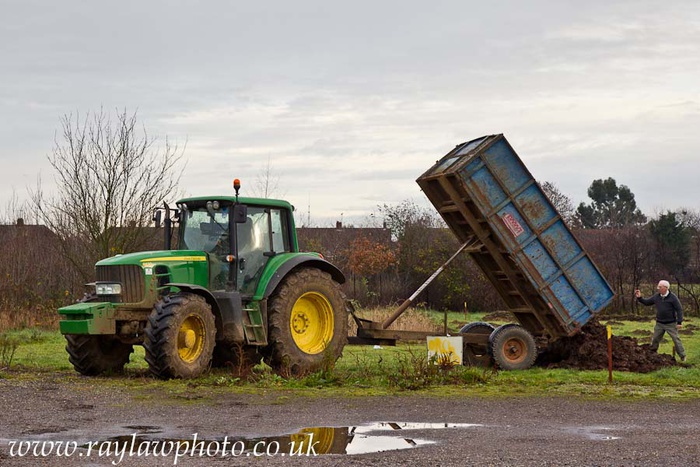
As with previous years the Allotment Association will be organising full or half loads of manure for delivery early to Mid December. The last ordering date for Plotholders is Sunday 13th November, with all orders through Peter Hunnable or the trading hut.
Full payment is required with the order at £30.50 per full load or £15.50 per half load if you can find someone to share a partial delivery with. If struggling with the latter, the Association may be able to put loads together.
Delivery dates when known will be advertised on the gates or website, and if access is poor to your plot and the delivery has to be made on an access path or road, it must be removed and put to the plot within 7 days of delivery.
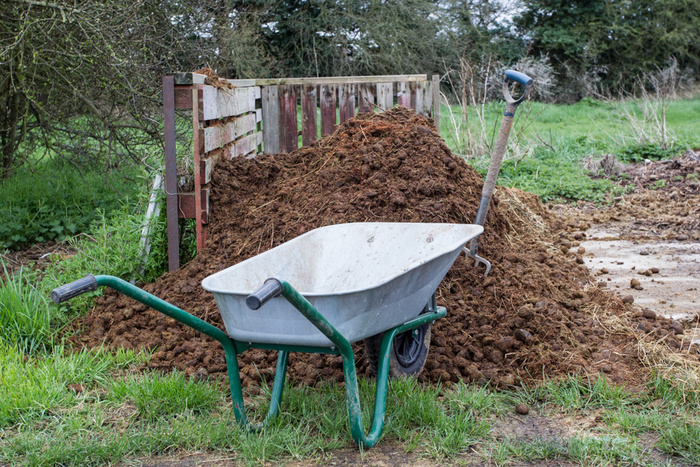
A big thank you to Peter for all the co ordination and effort that goes into this.
09th August 2016

As with previous years the Allotment Association will be organising full or half loads of manure for delivery early to Mid December. The last ordering date for Plotholders is Sunday 13th November, with all orders through Peter Hunnable or the trading hut.
Full payment is required with the order at £30.50 per full load or £15.50 per half load if you can find someone to share a partial delivery with. If struggling with the latter, the Association may be able to put loads together.
Delivery dates when known will be advertised on the gates or website, and if access is poor to your plot and the delivery has to be made on an access path or road, it must be removed and put to the plot within 7 days of delivery.

A big thank you to Peter for all the co ordination and effort that goes into this.
Celebrating Success
07th August 2016
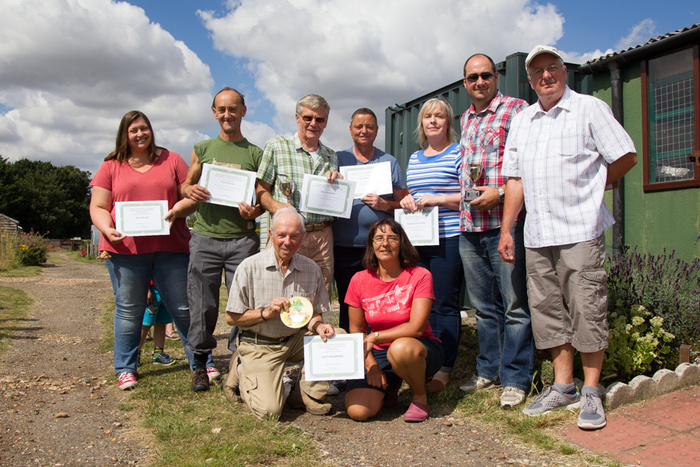
The successful plot holders of the Annual Allotment competition, together with the winners of the 'fun' Sunflower growing competition were congratulated at the Trading Hut on Saturday 6th August. Clive Emberson, a RHS judge cast his eye over the plots this year and awarded based on a combination of appearance, range and variety of vegetables and fruit being grown to reach his decisions.
The images under show Peter Hunnable, overall winner of the best plot 2016, plus second place Josie Rawling and third overall Paul Willsone. with Organiser Steve Withers, and Chairman Karen Lawrence.
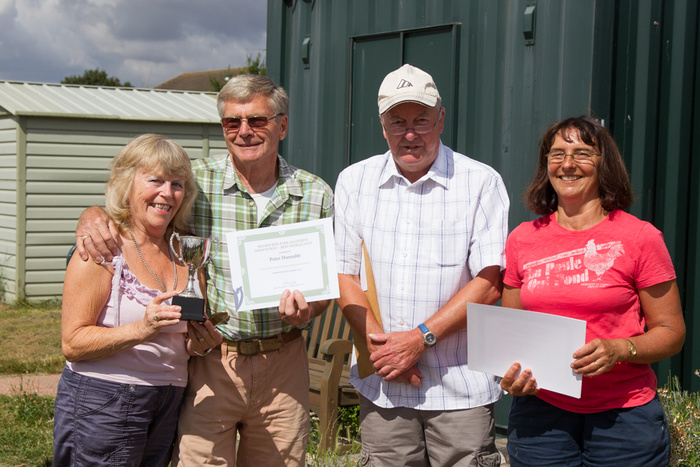
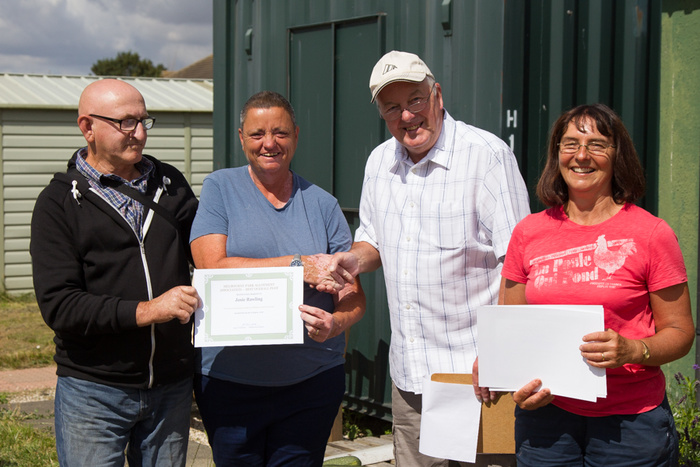
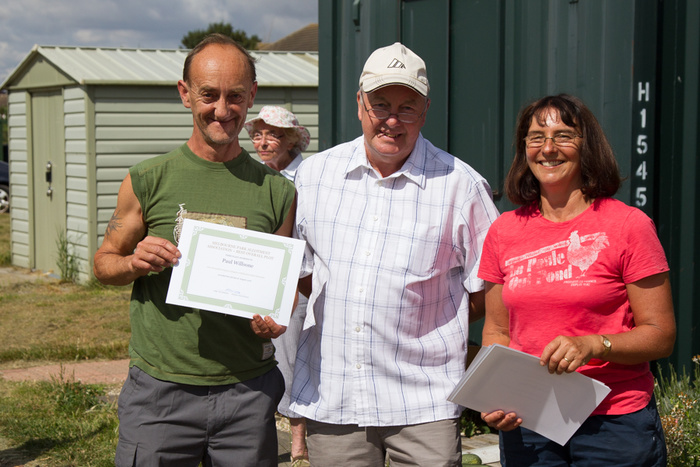
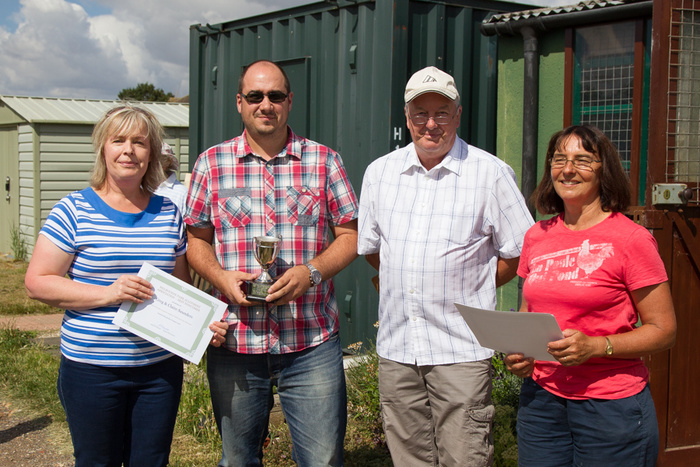
Greg and Claire Saunders were judged best newcomer plot (for those that have been on site for less than 18 months)
Following the success of last years fun pumpkin growing competition, the Association held a Sunflower competition, and managed to secure the expert officiating services of Mr Dave Ling to measure and determine the winning plants based on either height or the size of the head. Tons Holbrook produced the tallest specimen, with Pat Tilley the sunflower with the widest head. Unfortunately Pat was not able to make the presentation and his daughter Karen O' Meara ably stood in to collect the certificate.
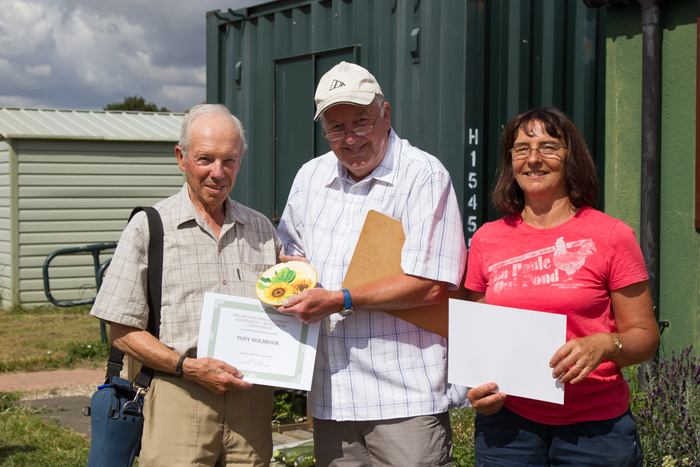
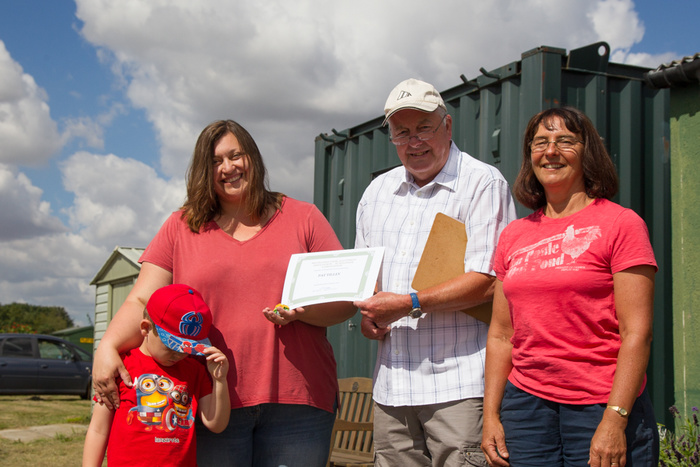
Thank you to everyone who took part, and to Steve Withers for organising the competition. Just a reminder, the trophies will be engraved and formally presented at the Annual Christmas Mulled Wine even, December 3rd at the Trading Hut.
Saturday 6th August.
07th August 2016

The successful plot holders of the Annual Allotment competition, together with the winners of the 'fun' Sunflower growing competition were congratulated at the Trading Hut on Saturday 6th August. Clive Emberson, a RHS judge cast his eye over the plots this year and awarded based on a combination of appearance, range and variety of vegetables and fruit being grown to reach his decisions.
The images under show Peter Hunnable, overall winner of the best plot 2016, plus second place Josie Rawling and third overall Paul Willsone. with Organiser Steve Withers, and Chairman Karen Lawrence.




Greg and Claire Saunders were judged best newcomer plot (for those that have been on site for less than 18 months)
Following the success of last years fun pumpkin growing competition, the Association held a Sunflower competition, and managed to secure the expert officiating services of Mr Dave Ling to measure and determine the winning plants based on either height or the size of the head. Tons Holbrook produced the tallest specimen, with Pat Tilley the sunflower with the widest head. Unfortunately Pat was not able to make the presentation and his daughter Karen O' Meara ably stood in to collect the certificate.


Thank you to everyone who took part, and to Steve Withers for organising the competition. Just a reminder, the trophies will be engraved and formally presented at the Annual Christmas Mulled Wine even, December 3rd at the Trading Hut.
Saturday 6th August.
Should have read the instructions!
30th July 2016
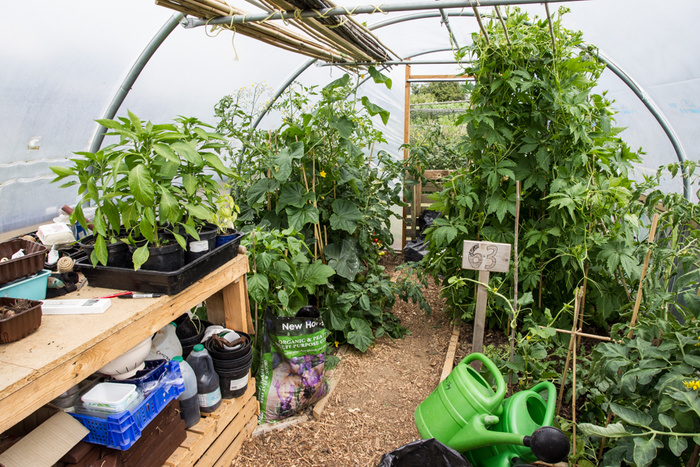
Any purchase of a product or activity that requires instructions to be carefully studied and followed should come with some form of warning. Pretty much a bloke thing (so I am often advised), instructions or guidance notes are very rarely followed, and are usually a bit of a drain on getting to grips with what we have purchased, or have set out to accomplish.
The same sort of warning should relate to the growing of plants. As early blogs have suggested, the writer started with a viewpoint of how difficult could it be, and now some of that rather laissez faire approach is providing a few important lessons.
The biggest exists in the poly tunnel, where the drive to grow some different exotic vegetables at face value seems to have heralded some results, but also some unexpected issues. In particular the stuffing cucumber, whose leaves resemble another growth fondly recognised by smokers, is scrambling everywhere. A quick google search and a read of the notes on the seed packets suggest that these plants can grow to 3m x 4m in terms of spread! Oh dear - I've planted three of these in the space of 3 foot and the growth is now spreading rather quickly!!! I should have read the notes first - oh well, the results are at least eagerly anticipated.
Despite all this a steady stream of produce is now being harvested and sent to our chosen charity organisation, together with donations from other plot holders which have been gratefully received, thank you.
The plot itself has a spray of colour at the front from the planting of cornflowers, candelula, and dahlias, and some small lavender shoots has been planted close to the decking with the hope that this takes and grows well. Lavender and similar plants attract all sorts of bees and butterflies, which are good for the plot.
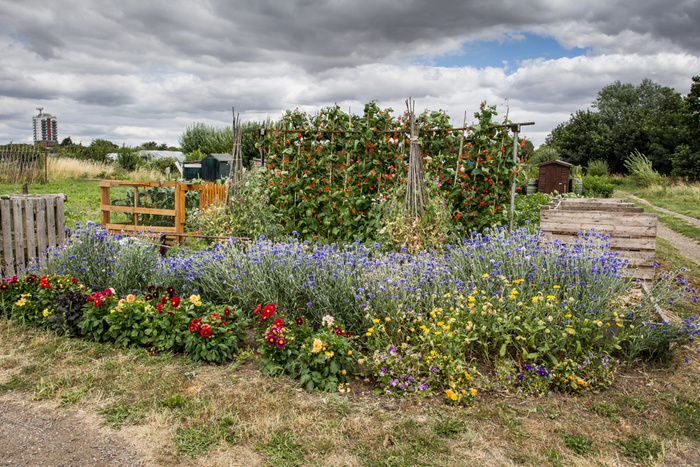
There isn't that much to offer up on the wildlife front, the only strange looking visitor a couple of weeks ago was this Clearwing. It is actually a moth, although when it first landed looked a little like a wasp. It tends to lay its eggs on current or berry bushes, and some further information can be found under.
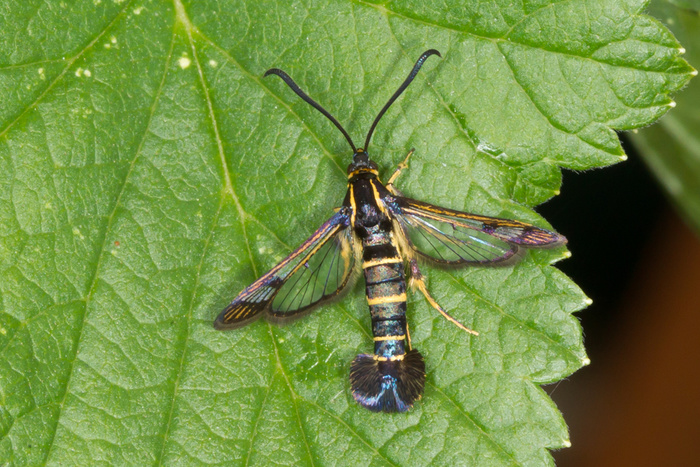
Scientific name: Synanthedon tipuliformis
June - July. Britain and Ireland. Small, transparent wings. Said to mimics wasps or hornets for protection from predators. Can be seen in gardens, allotments and fruit fields. Often found near currant bushes.
All Britain's resident clearwing moths fly by day. Several are superficially similar. This clearwing is small and black with a yellow collar and two yellow lines along the thorax which are absent on the similar Sallow Clearwing. Females have three and males have four thin yellow bands across the abdomen. The dark outer band on the forewing is streaked with orange on the Currant Clearwing which helps to distinguish it from the Thrift Clearwing.
Flies by day in sunny weather, often around larval foodplants and can also be found resting on leaves. Males are readily attracted to females, often in great numbers.
Size and Family
Family – Clearwing (Sesiids)
Small Sized
Conservation status
UK BAP: Not listed
Scarce (Nationally Scarce B)
Particular Caterpillar Food Plants
Cultivated and sometimes wild Black and Red Currant, less frequently on Gooseberry.
Information from butterfly conservation website.
..//.. Project 63
30th July 2016
In: Project 63

Any purchase of a product or activity that requires instructions to be carefully studied and followed should come with some form of warning. Pretty much a bloke thing (so I am often advised), instructions or guidance notes are very rarely followed, and are usually a bit of a drain on getting to grips with what we have purchased, or have set out to accomplish.
The same sort of warning should relate to the growing of plants. As early blogs have suggested, the writer started with a viewpoint of how difficult could it be, and now some of that rather laissez faire approach is providing a few important lessons.
The biggest exists in the poly tunnel, where the drive to grow some different exotic vegetables at face value seems to have heralded some results, but also some unexpected issues. In particular the stuffing cucumber, whose leaves resemble another growth fondly recognised by smokers, is scrambling everywhere. A quick google search and a read of the notes on the seed packets suggest that these plants can grow to 3m x 4m in terms of spread! Oh dear - I've planted three of these in the space of 3 foot and the growth is now spreading rather quickly!!! I should have read the notes first - oh well, the results are at least eagerly anticipated.
Despite all this a steady stream of produce is now being harvested and sent to our chosen charity organisation, together with donations from other plot holders which have been gratefully received, thank you.
The plot itself has a spray of colour at the front from the planting of cornflowers, candelula, and dahlias, and some small lavender shoots has been planted close to the decking with the hope that this takes and grows well. Lavender and similar plants attract all sorts of bees and butterflies, which are good for the plot.

There isn't that much to offer up on the wildlife front, the only strange looking visitor a couple of weeks ago was this Clearwing. It is actually a moth, although when it first landed looked a little like a wasp. It tends to lay its eggs on current or berry bushes, and some further information can be found under.

Scientific name: Synanthedon tipuliformis
June - July. Britain and Ireland. Small, transparent wings. Said to mimics wasps or hornets for protection from predators. Can be seen in gardens, allotments and fruit fields. Often found near currant bushes.
All Britain's resident clearwing moths fly by day. Several are superficially similar. This clearwing is small and black with a yellow collar and two yellow lines along the thorax which are absent on the similar Sallow Clearwing. Females have three and males have four thin yellow bands across the abdomen. The dark outer band on the forewing is streaked with orange on the Currant Clearwing which helps to distinguish it from the Thrift Clearwing.
Flies by day in sunny weather, often around larval foodplants and can also be found resting on leaves. Males are readily attracted to females, often in great numbers.
Size and Family
Family – Clearwing (Sesiids)
Small Sized
Conservation status
UK BAP: Not listed
Scarce (Nationally Scarce B)
Particular Caterpillar Food Plants
Cultivated and sometimes wild Black and Red Currant, less frequently on Gooseberry.
Information from butterfly conservation website.
..//.. Project 63
Elsewhere on the Allotment
28th July 2016
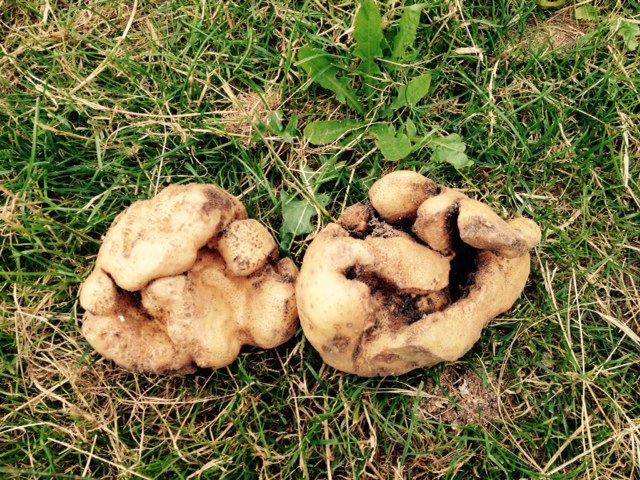
Whilst Hugh Fearnley Whittingstall has been campaigning against the unnecessary cosmetic requirements for accepting fruit and vegetables into their stores, we wonder what they may have made of these Potato samples.
Josie managed to produce two potatoes that resembled knuckle dusters and we are curious to understand what may have happened or what circumstances may have prevailed to allow the crop to grow like this. Any suggestions or information would be most welcome.
28th July 2016

Whilst Hugh Fearnley Whittingstall has been campaigning against the unnecessary cosmetic requirements for accepting fruit and vegetables into their stores, we wonder what they may have made of these Potato samples.
Josie managed to produce two potatoes that resembled knuckle dusters and we are curious to understand what may have happened or what circumstances may have prevailed to allow the crop to grow like this. Any suggestions or information would be most welcome.
Allotment Competition Result
24th July 2016
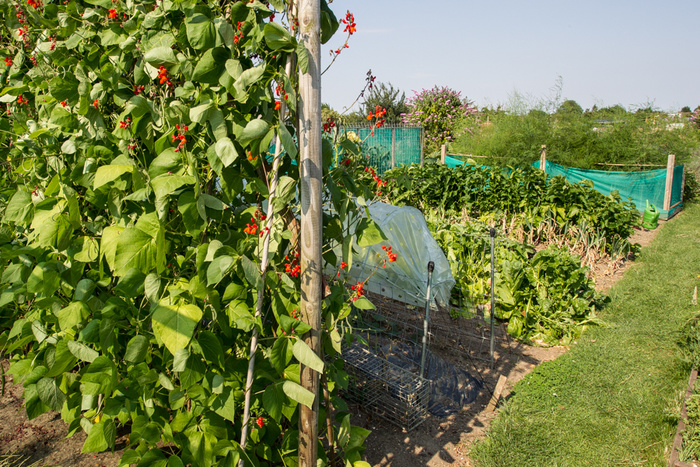
Every year the Association organises for an independent judge to come and take a view of all the member's plots and award what they believe to be the 'best in class'. The judging is split into two categories, those that have are long standing plot holders at the site, and an award for the best newcomers, those who have held a plot for less than 18 months.
This year, we were fortunate to secure the eagle eye of Mr Clive Emberson, a member of the RHS allotment judging panel, and member of Hatfield Peveral Horticultural Society to complete the honours for us. On Monday 16th July Steve accompanied around the site and we can now announce the winning plot holders.
In the category of long standing plot holders, the winner was Peter Hunnable (plots 48 and 78L), runner up Josie Rawling (plots 104F, 105R, 106R) and in third place Paul Wilson (plot 120).
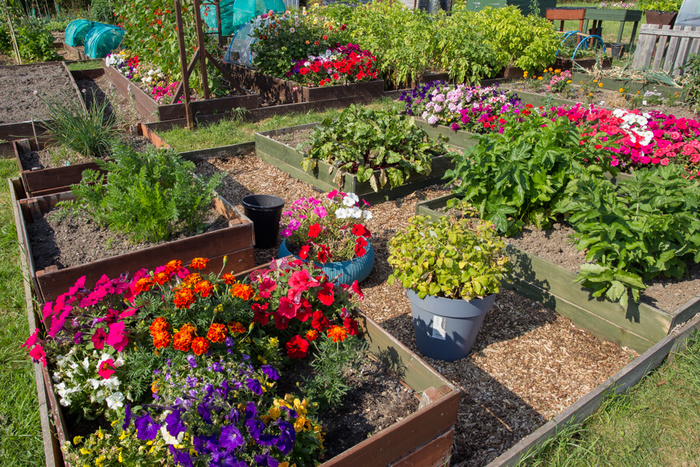
In regards to the newcomers category, Plot 63 was inadvertently included in the judging, and whilst it was suggested that this was a winning plot, it has been cultivated by long standing association members, and therefore considered it inappropriate to be included in the competition. The winner of the best newcomer category is therefore plot 15L, Gregory Saunders, whose neat and organised lay out caught the eye.
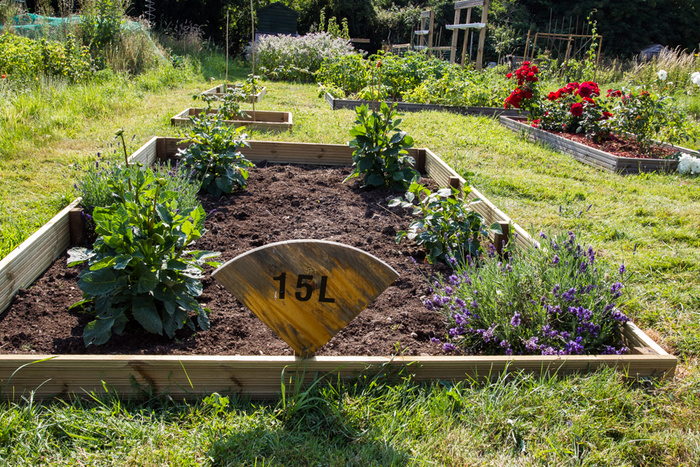
We would like to offer our congratulations to all those plot holders, and plan to hold a presentation morning to award certificates on Saturday 6th August at 11:00 by the trading hut along with the winners of the for fun sunflower competition. It would be good if you are able to help us celebrate the winners on this morning.
Finally the Association would like to offer a huge thank you to Karen, Derek, Josie, Peter & Sybil, Darryl, Dave R, Dave L and Ian who have got stuck in with Project 63. Also to our neighbour Chris, not a member of the association, who got stuck in for a couple of weekends with various building activities. Your input is hugely appreciated.
The last vote of thanks to Steve Withers for organising and co ordinating the judging, and to Clive for the time and diligence in looking at all the plots and reaching his decisions.
24th July 2016

Every year the Association organises for an independent judge to come and take a view of all the member's plots and award what they believe to be the 'best in class'. The judging is split into two categories, those that have are long standing plot holders at the site, and an award for the best newcomers, those who have held a plot for less than 18 months.
This year, we were fortunate to secure the eagle eye of Mr Clive Emberson, a member of the RHS allotment judging panel, and member of Hatfield Peveral Horticultural Society to complete the honours for us. On Monday 16th July Steve accompanied around the site and we can now announce the winning plot holders.
In the category of long standing plot holders, the winner was Peter Hunnable (plots 48 and 78L), runner up Josie Rawling (plots 104F, 105R, 106R) and in third place Paul Wilson (plot 120).

In regards to the newcomers category, Plot 63 was inadvertently included in the judging, and whilst it was suggested that this was a winning plot, it has been cultivated by long standing association members, and therefore considered it inappropriate to be included in the competition. The winner of the best newcomer category is therefore plot 15L, Gregory Saunders, whose neat and organised lay out caught the eye.

We would like to offer our congratulations to all those plot holders, and plan to hold a presentation morning to award certificates on Saturday 6th August at 11:00 by the trading hut along with the winners of the for fun sunflower competition. It would be good if you are able to help us celebrate the winners on this morning.
Finally the Association would like to offer a huge thank you to Karen, Derek, Josie, Peter & Sybil, Darryl, Dave R, Dave L and Ian who have got stuck in with Project 63. Also to our neighbour Chris, not a member of the association, who got stuck in for a couple of weekends with various building activities. Your input is hugely appreciated.
The last vote of thanks to Steve Withers for organising and co ordinating the judging, and to Clive for the time and diligence in looking at all the plots and reaching his decisions.
Sunniest Sunflower Result and Presentation
23rd July 2016
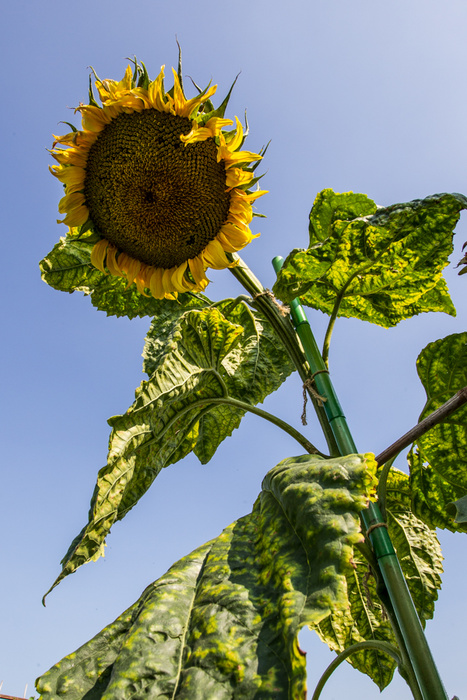
The 'for fun' competition this year revolved around sunflowers, which seemed at one point a little ironic in view of how little the sun had shone. However, our overnight expert and independent judge Mr David Ling kindly availed us of his measuring tape and eagle eye on Friday to assess. There was still one undecided factor - what constitutes a winning specimen - it's height or the width of the head. On this basis we decided to award for both.
We are pleased to announce that Tony Holbrook was the winner of the tallest sunflower, and Pat Tilley the winner of the largest flower, congratulations to both and a big thank you to David Ling and Karen for their eagle eyed measurements.
The original plan was to provide a small presentation on Sunday 24th, however we suggest it may be more appropriate to combine this with the awards for the Allotment plot competition and propose to hold both presentations on Saturday 6th August at the trading hut for 11:00.
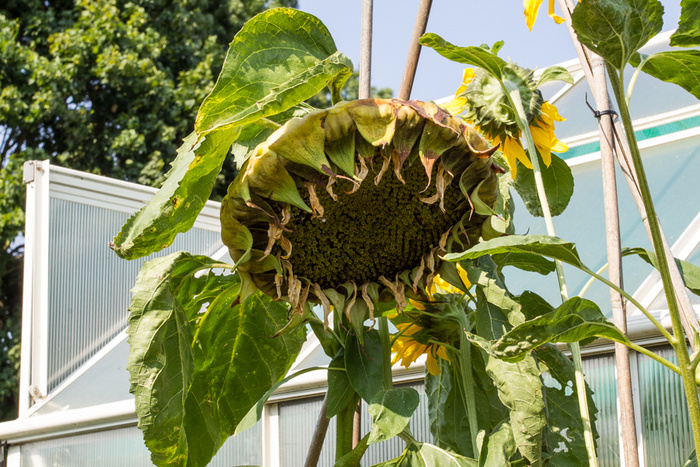
23rd July 2016

The 'for fun' competition this year revolved around sunflowers, which seemed at one point a little ironic in view of how little the sun had shone. However, our overnight expert and independent judge Mr David Ling kindly availed us of his measuring tape and eagle eye on Friday to assess. There was still one undecided factor - what constitutes a winning specimen - it's height or the width of the head. On this basis we decided to award for both.
We are pleased to announce that Tony Holbrook was the winner of the tallest sunflower, and Pat Tilley the winner of the largest flower, congratulations to both and a big thank you to David Ling and Karen for their eagle eyed measurements.
The original plan was to provide a small presentation on Sunday 24th, however we suggest it may be more appropriate to combine this with the awards for the Allotment plot competition and propose to hold both presentations on Saturday 6th August at the trading hut for 11:00.

Project 63 Update
11th July 2016
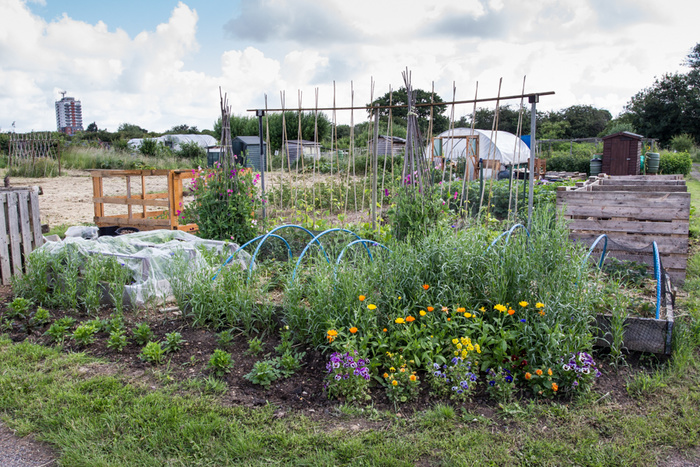
Welcome to the latest update from Project 63 and we are pleased to report the production of various foodstuffs now well underway, and donations to charity have been gratefully received.A selection of strawberries, raspberries, early potatoes, broad beans and two different variety of courgettes have all been donated. What remained of the magic carrots, - the non magic variety which were actually carrots and not a weed) - seem to have progressed reasonably well, and the patch next to the sweet corn area now dug over with french beans and leeks planted.
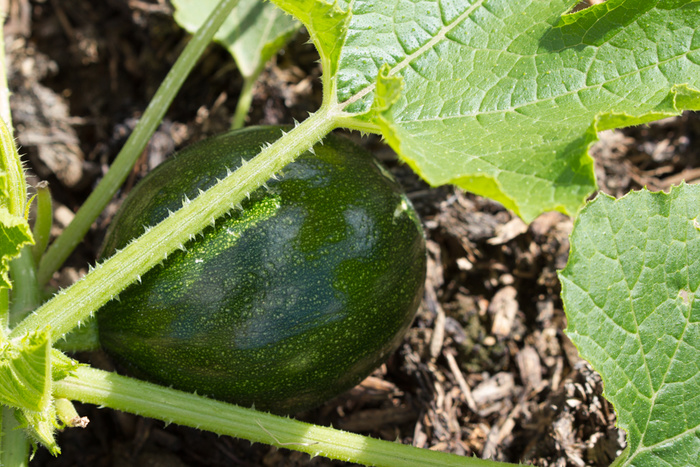
The poly tunnel is alive with green growth, with cucumbers, tomatoes, peppers, aubergines and a couple of more oriental vegetables seemingly thriving and the results of the latter eagerly anticipated. Finally the area by the shed and decking also fully dug over and weeded in preparation of create a wildlife area, and a big thanks to Derek who has kindly fixed the guttering on the shed, which would otherwise have remained a puzzle of epic proportions for yours truly to figure out.
11th July 2016
In: Project 63

Welcome to the latest update from Project 63 and we are pleased to report the production of various foodstuffs now well underway, and donations to charity have been gratefully received.A selection of strawberries, raspberries, early potatoes, broad beans and two different variety of courgettes have all been donated. What remained of the magic carrots, - the non magic variety which were actually carrots and not a weed) - seem to have progressed reasonably well, and the patch next to the sweet corn area now dug over with french beans and leeks planted.

The poly tunnel is alive with green growth, with cucumbers, tomatoes, peppers, aubergines and a couple of more oriental vegetables seemingly thriving and the results of the latter eagerly anticipated. Finally the area by the shed and decking also fully dug over and weeded in preparation of create a wildlife area, and a big thanks to Derek who has kindly fixed the guttering on the shed, which would otherwise have remained a puzzle of epic proportions for yours truly to figure out.
Friday 22nd July - Sunniest Sunflower?
11th July 2016
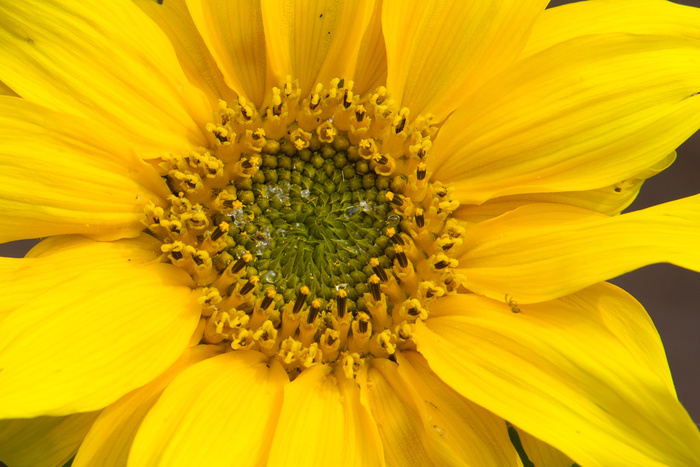
Whilst the weather conditions seem to have adversely affected the growing of sunflowers, we are proposing to measure all those sunflowers that have actually made it for this years 'fun' competition on Friday 22nd July.
The plan is to judge all those that originally took seeds, with David Ling kindly volunteering to act as an independent adjudicator.
A small presentation to take place on Sunday 24th July at 11.00 at the trading hut, and we hope as many as possible will turn up to witness the outcome of this fun event.
Regrettably for yours truly, my sunflower produced many weeks ago, and is currently a sad reflection of the image accompanying this news article. Never mind.....It's the taking part that counts!
11th July 2016

Whilst the weather conditions seem to have adversely affected the growing of sunflowers, we are proposing to measure all those sunflowers that have actually made it for this years 'fun' competition on Friday 22nd July.
The plan is to judge all those that originally took seeds, with David Ling kindly volunteering to act as an independent adjudicator.
A small presentation to take place on Sunday 24th July at 11.00 at the trading hut, and we hope as many as possible will turn up to witness the outcome of this fun event.
Regrettably for yours truly, my sunflower produced many weeks ago, and is currently a sad reflection of the image accompanying this news article. Never mind.....It's the taking part that counts!
Much Room for Mush Rooms?
22nd June 2016
At differing points in time on the Allotment various different mushrooms /fungi have been spotted on site. Whilst we have tried our best to identify and provide some information within this article, any more experienced fungi experts who could identify and advise more fully would be appreciated.
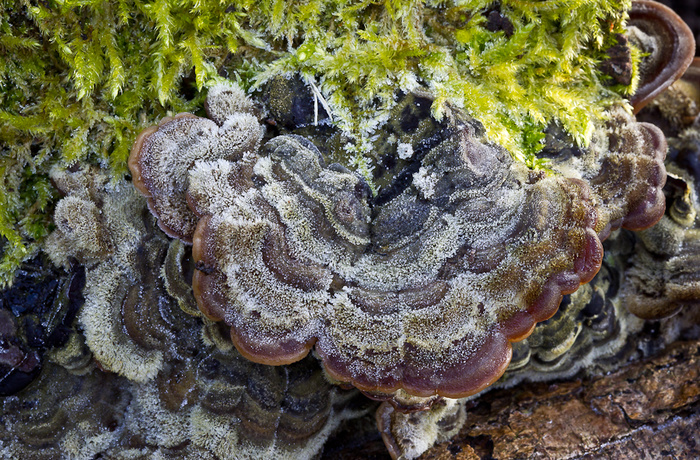
Some time ago, a log pile was placed on Karen's allotment, and two differing types of fungi have now been photographed. The first was a considerable spread of Tramatus Vericolor, apparently quite common and gets it's name from the rings of colour on the fungi. Trematus vericolor translating 'of several colours'.
More recently a rather more glorious specimen developed, Dryad's Saddle Cap, significant in size, apparently edible and thrives on dead or rotting wood. Individual caps grow to between 10 and 60cm in diameter and are 5 to 50mm thick. Often in tiers, the caps are attached to the host tree by a very short lateral (occasionally eccentric but not quite lateral) stem that darkens towards the base.
Beneath the yellow to tan upper surface, the cap flesh is white and tough.
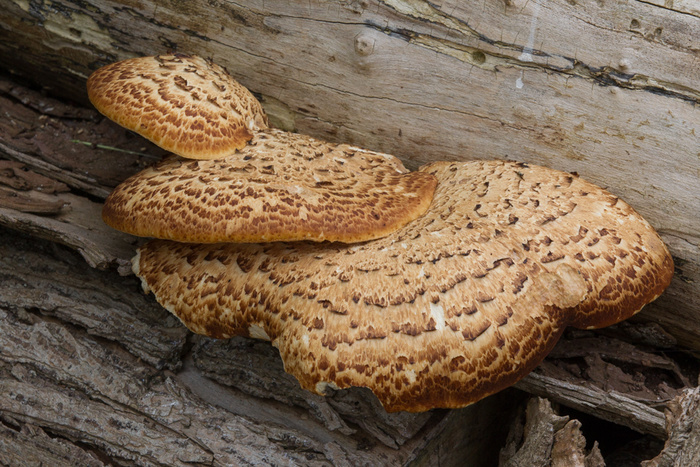
Spotted last weekend on the pathway of project 63, and a small fungi known to grow on areas of mulch or rotting wood, Parasola Auricoma. When young, its rusty brown to orange-brown cap lacks woolly or scaly veil remnants--and as the cap matures, developing grayish, umbrella-like striations, the center area remains smooth and orangish brown. Under the microscope, Parasola auricoma features fairly large, ellipsoid spores and a cap surface adorned with very long, reddish brown hairs.
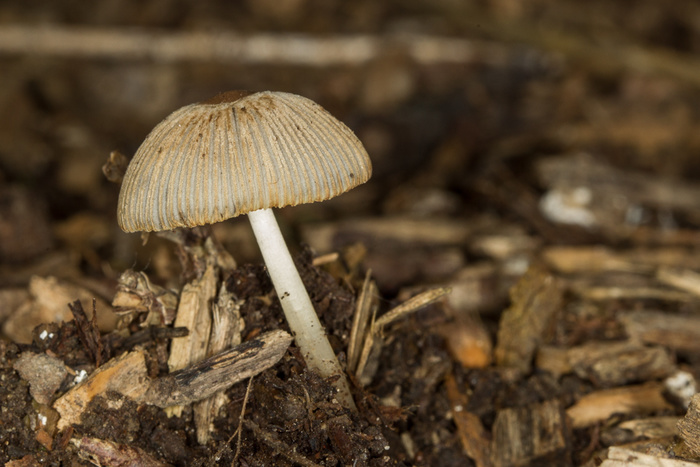
Recently spied on a heavily manured plot along the middle of the site a considerable volume of Panaeolus Semiovatus, known to produce on cattle manure.
Panaeolus semiovatus var. semiovatus, also known as Panaeolus semiovatus and Anellaria separata, is a medium-sized buff colored mushroom/toadstool that grows on horse dung, and has black spores. While some guides list this species as edible, a few people experience gastric upset after consumption. Its common names are the shiny mottlegill, or egghead mottlegill
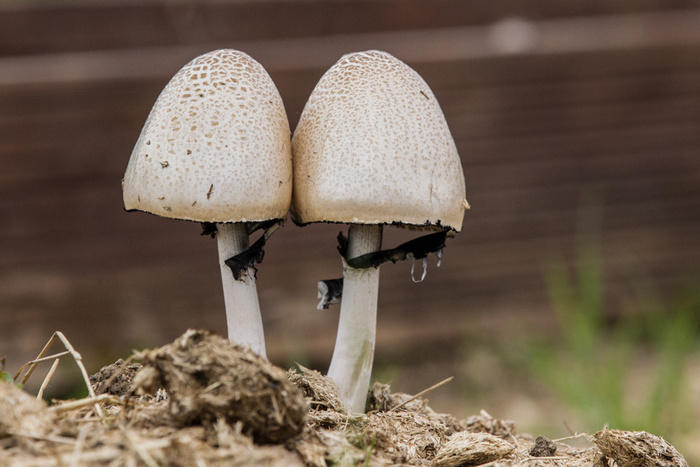
Images of the above are contained within this article, and if there are any observations or corrections we would welcome these to ensure that the information contained is as accurate as possible.
22nd June 2016
At differing points in time on the Allotment various different mushrooms /fungi have been spotted on site. Whilst we have tried our best to identify and provide some information within this article, any more experienced fungi experts who could identify and advise more fully would be appreciated.

Some time ago, a log pile was placed on Karen's allotment, and two differing types of fungi have now been photographed. The first was a considerable spread of Tramatus Vericolor, apparently quite common and gets it's name from the rings of colour on the fungi. Trematus vericolor translating 'of several colours'.
More recently a rather more glorious specimen developed, Dryad's Saddle Cap, significant in size, apparently edible and thrives on dead or rotting wood. Individual caps grow to between 10 and 60cm in diameter and are 5 to 50mm thick. Often in tiers, the caps are attached to the host tree by a very short lateral (occasionally eccentric but not quite lateral) stem that darkens towards the base.
Beneath the yellow to tan upper surface, the cap flesh is white and tough.

Spotted last weekend on the pathway of project 63, and a small fungi known to grow on areas of mulch or rotting wood, Parasola Auricoma. When young, its rusty brown to orange-brown cap lacks woolly or scaly veil remnants--and as the cap matures, developing grayish, umbrella-like striations, the center area remains smooth and orangish brown. Under the microscope, Parasola auricoma features fairly large, ellipsoid spores and a cap surface adorned with very long, reddish brown hairs.

Recently spied on a heavily manured plot along the middle of the site a considerable volume of Panaeolus Semiovatus, known to produce on cattle manure.
Panaeolus semiovatus var. semiovatus, also known as Panaeolus semiovatus and Anellaria separata, is a medium-sized buff colored mushroom/toadstool that grows on horse dung, and has black spores. While some guides list this species as edible, a few people experience gastric upset after consumption. Its common names are the shiny mottlegill, or egghead mottlegill

Images of the above are contained within this article, and if there are any observations or corrections we would welcome these to ensure that the information contained is as accurate as possible.
The Novice growers disappointment.
12th June 2016
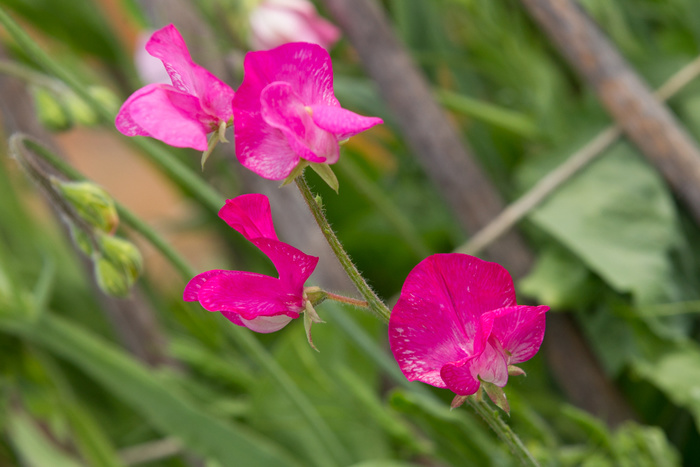
Project 63 now has some colour, plenty of growth, and this all coincides with lots of colour around the rest of the allotment site.
For the novice grower there is a lot to be excited about: the potatoes seem to be doing well, and have flowers; the sweet peas are starting to flower, all of which adds colour to the plot, and amazingly we have our first courgette.
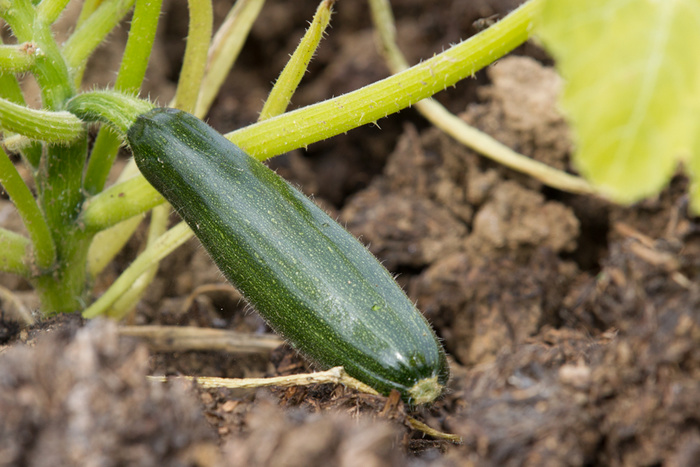
However, amongst all this good news is some disappointment. An earlier blog highlighted the fact that we had some magic carrots that had seemingly absconded and determined to grow outside of where they were sown. Alas this rather romantic notion was dashed this weekend when the plants that were supposed to be the projects answer to Jack and the Beanstalk produced some flowers, which could be immediately identified as Fumitory, and viewed as a weed to most.
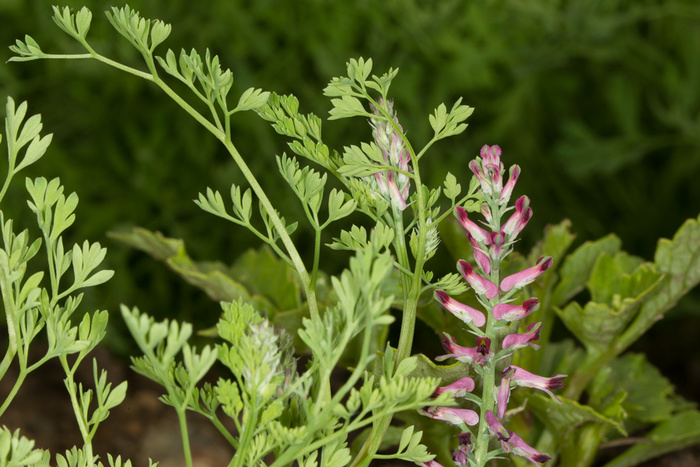
- not magic carrots, after all, but a plant called Fumitory -
Common fumitory has been used medicinally, as can be seen from its old Finnish name and its scientific species name officinalis. A century and a half ago folk medicine was highly nuanced, and common fumitory was used to treat stomach and gall problems, haemorrhoids, migraines, bad blood, and a host of other conditions. Folk healers had to be very careful with common fumitory: its stems are poisonous and the fumarin that they contain can affect patients very differently in different dosages.
Nowadays common fumitory is generally regarded as a weed, although its red flowers make it an attractive annual in fields and gardens. The species’ seeds germinate early in the spring and the plant might begin to flower already in June. It can stand frost long into the autumn. Despite being common, the plant hides itself so well among other vegetation that it isn’t easy to find. It often goes unnoticed by insects too and has to self-pollinate in order to produce seeds.
Information from a web site called Nature Gate.
None the less, it had to go, and now in the place of magic carrots, have planted some dahlias.
From a photographer's perspective the success of the plot naturally encourages lots of insects, some of whom we would consider to be friendly, particularly those that feast on all those beasties that allotment holders wage a constant battle against (green fly, black fly and other), and the flowering plants, including comfrey encourage the bees and pollinators. Check in for future posts for further wildlife updates.
So Fumitory can be formerly added to our rogues gallery, or our collection of 'know your enemy'.
12th June 2016
In: Project 63

Project 63 now has some colour, plenty of growth, and this all coincides with lots of colour around the rest of the allotment site.
For the novice grower there is a lot to be excited about: the potatoes seem to be doing well, and have flowers; the sweet peas are starting to flower, all of which adds colour to the plot, and amazingly we have our first courgette.

However, amongst all this good news is some disappointment. An earlier blog highlighted the fact that we had some magic carrots that had seemingly absconded and determined to grow outside of where they were sown. Alas this rather romantic notion was dashed this weekend when the plants that were supposed to be the projects answer to Jack and the Beanstalk produced some flowers, which could be immediately identified as Fumitory, and viewed as a weed to most.

- not magic carrots, after all, but a plant called Fumitory -
Common fumitory has been used medicinally, as can be seen from its old Finnish name and its scientific species name officinalis. A century and a half ago folk medicine was highly nuanced, and common fumitory was used to treat stomach and gall problems, haemorrhoids, migraines, bad blood, and a host of other conditions. Folk healers had to be very careful with common fumitory: its stems are poisonous and the fumarin that they contain can affect patients very differently in different dosages.
Nowadays common fumitory is generally regarded as a weed, although its red flowers make it an attractive annual in fields and gardens. The species’ seeds germinate early in the spring and the plant might begin to flower already in June. It can stand frost long into the autumn. Despite being common, the plant hides itself so well among other vegetation that it isn’t easy to find. It often goes unnoticed by insects too and has to self-pollinate in order to produce seeds.
Information from a web site called Nature Gate.
None the less, it had to go, and now in the place of magic carrots, have planted some dahlias.
From a photographer's perspective the success of the plot naturally encourages lots of insects, some of whom we would consider to be friendly, particularly those that feast on all those beasties that allotment holders wage a constant battle against (green fly, black fly and other), and the flowering plants, including comfrey encourage the bees and pollinators. Check in for future posts for further wildlife updates.
So Fumitory can be formerly added to our rogues gallery, or our collection of 'know your enemy'.
Hyde Hall Visit - reminder
11th June 2016
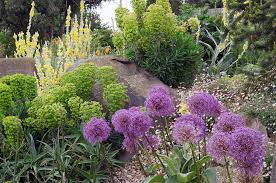
The Allotment Association is organising a day out to Hyde Hall on 16th July, on the basis that entry is free to all members as part of the Association's membership of the Royal Horticultural Society. The general idea is to make our own way to Hyde Hall for a set time so that we can take advantage of the free entrance.
We have to book in advance with Hyde Hall to benefit from this facility and we will be placing the booking on 22nd June. If you would like to visit, please contact Karen, Tony or the Trading Hut so that we can add your names to the list.
11th June 2016

The Allotment Association is organising a day out to Hyde Hall on 16th July, on the basis that entry is free to all members as part of the Association's membership of the Royal Horticultural Society. The general idea is to make our own way to Hyde Hall for a set time so that we can take advantage of the free entrance.
We have to book in advance with Hyde Hall to benefit from this facility and we will be placing the booking on 22nd June. If you would like to visit, please contact Karen, Tony or the Trading Hut so that we can add your names to the list.
Know your enemies?
09th June 2016
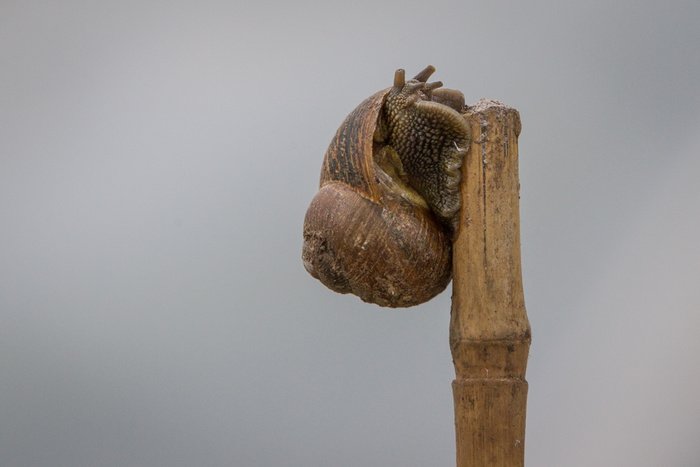
Know your enemies is a phrase banded about in many aspects of life. However, this phrase could not be seemingly more important to the Allotment plot holder whose constant battle against invaders focused on a free meal from all their hard effort is continuous.
However, some of those foes that we may consider to be enemies, should be in fact considered friends. Take the wasp. For most a pest, and frequently questioned as to 'what is their purpose?'. A recent study and article in the Daily Telegraph championed the cause of the wasp suggesting that without their voracious appetite for aphids, bugs and beasties we could potentially be over run with these damaging invaders. A link to the article can be follows
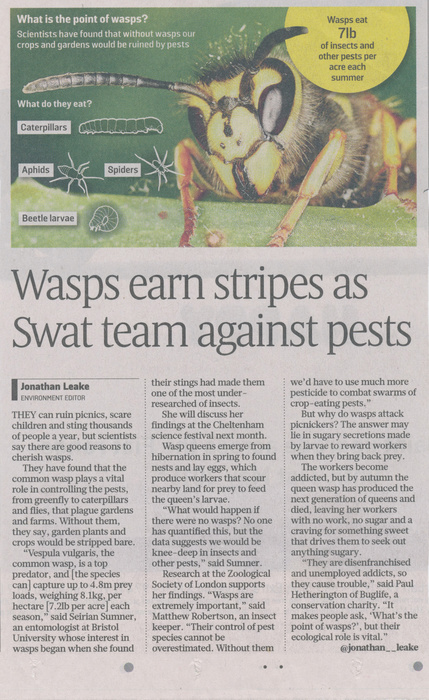
Snails on the other hand should definitely be considered an enemy. With their messy trails and taste for greens, garden snails are often considered to be pests whose strong homing instinct makes human control difficult. They are often seen after rain, and leave a tell-tale trail of mucus. When conditions are dry, snails retreat into their shell and seal the entrance. They can then survive in a state of suspended animation for several months. Did you know? A single garden snail can have 430 babies in a year.
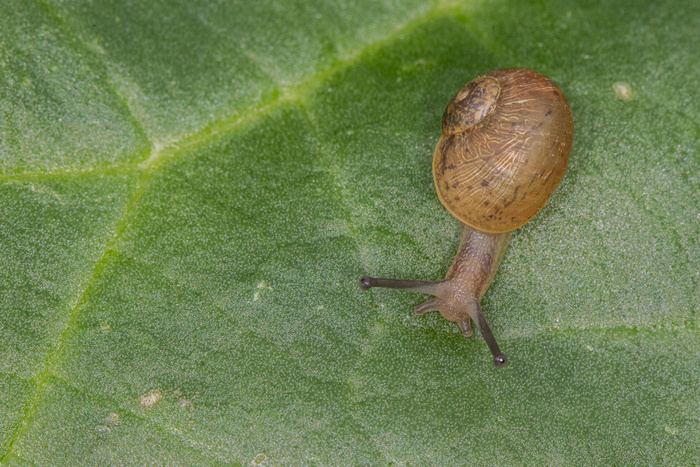
Despite all the writers best efforts to ensure plants protected, this particular snail seemed to have an interest in extreme methods in the search for a feast, climbing this six foot cane, and struggling a little at the top to turn round. Regrettably for the snail, I found it before it found my aubergine plants, and after posing for the camera, he was duly removed. It never occurred to me that snails have strong homing instincts, (as per articles on the web) and hope that where i deposited the fiend is suitably distant enough for no further concern.
09th June 2016
In: Project 63

Know your enemies is a phrase banded about in many aspects of life. However, this phrase could not be seemingly more important to the Allotment plot holder whose constant battle against invaders focused on a free meal from all their hard effort is continuous.
However, some of those foes that we may consider to be enemies, should be in fact considered friends. Take the wasp. For most a pest, and frequently questioned as to 'what is their purpose?'. A recent study and article in the Daily Telegraph championed the cause of the wasp suggesting that without their voracious appetite for aphids, bugs and beasties we could potentially be over run with these damaging invaders. A link to the article can be follows

Snails on the other hand should definitely be considered an enemy. With their messy trails and taste for greens, garden snails are often considered to be pests whose strong homing instinct makes human control difficult. They are often seen after rain, and leave a tell-tale trail of mucus. When conditions are dry, snails retreat into their shell and seal the entrance. They can then survive in a state of suspended animation for several months. Did you know? A single garden snail can have 430 babies in a year.

Despite all the writers best efforts to ensure plants protected, this particular snail seemed to have an interest in extreme methods in the search for a feast, climbing this six foot cane, and struggling a little at the top to turn round. Regrettably for the snail, I found it before it found my aubergine plants, and after posing for the camera, he was duly removed. It never occurred to me that snails have strong homing instincts, (as per articles on the web) and hope that where i deposited the fiend is suitably distant enough for no further concern.
It isn't just about managing what you grow!
31st May 2016
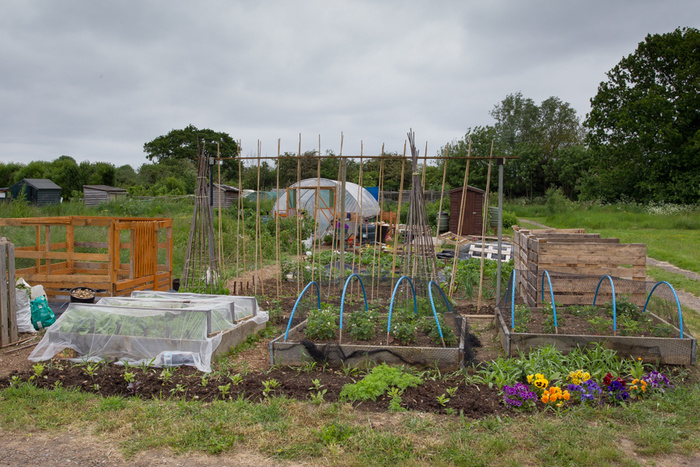
It is rapidly dawning on yours truly that the art of the allotment is not just about managing what you determine to grow, but managing all those things that you don't want to grow, or encourage. Having recovered from the shock that a week on vacation heralds an invasion of weeds, the slightest moisture whether rain or a serious watering has a similar effect. With Karen and yours truly spending the last couple of saturdays dealing with the intruders, a certain degree of paranoia seems to creep in. I am sure by the time a visit to the cabin to consume the day before's left over chinese and return, that several of the intrepid beasties had protruded.......
None the less, project 63 seems to be taking shape. Protection for the strawberries has been provided, and despite the best attempts of the local badger population, the carrots (although a little sparse) and the celtuce seem unaffected. Once the weed infestation was cleared, the beetroot, parsnips seem to be sprouting, although the Kohl Rabi and turnip seem to be absent. The runner beans, several different types all seem to be protruding, and the area by the manure heap now hosts two different type of courgette, Tondo di Piacenza and Zucchini, plus Butternut squash.
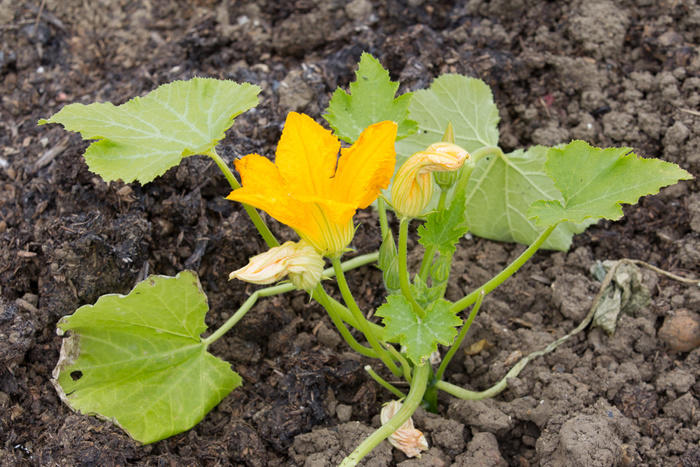
Monday's weather was a little off, and the writer bagged the plumb job of working the poly tunnel, whilst commandeering the radio and tuning in to test match special. The area to the left as you walk in now has tomato, peppers and a couple of aubergines, whilst on the other side the soil has been turned over, a healthy dose of manure and some peat added, in preparation for the planting of our jungle seeds.
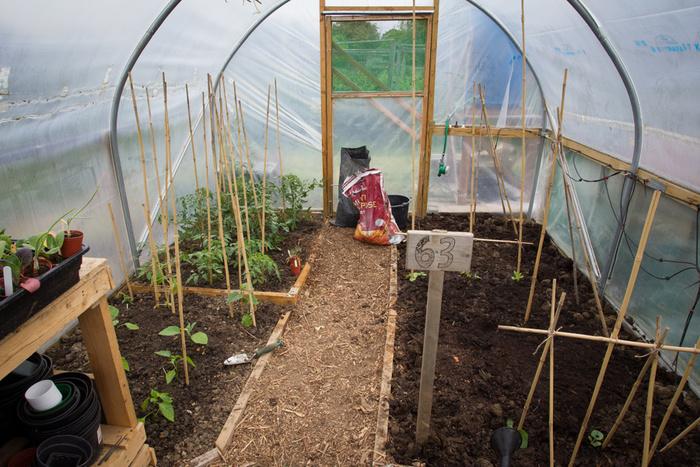
Peter Hunnable has kindly nurtured several Cucamelons, and the airing cupboard at home has been relieved of stuffing cucumber (Cyclanthera Pedata) plants. There is some space remaining for some melons thus ensuring that our ambition to experiment sets off.
Finally, going back to the original theme, the black fabric by the shed was cut and lifted to enable the sunflowers and some colour in the form of dahlia's to be planted only to herald a veritable army of slugs.
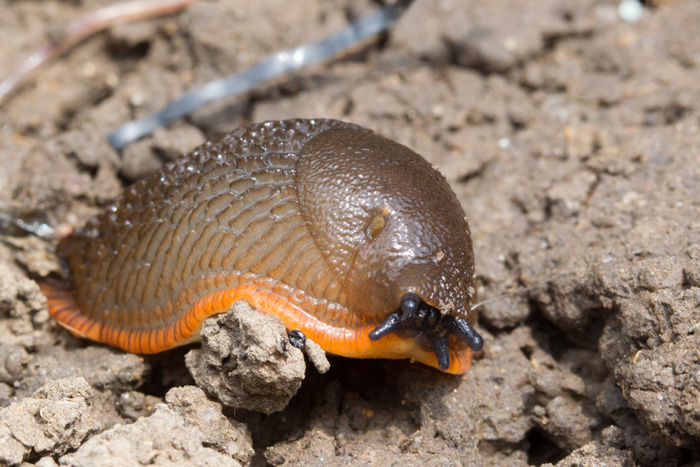
I read somewhere, 'know your enemies', and with this in mind watch future posts for some further information on the 'Allotment keepers friends and foes'.
31st May 2016
In: Project 63

It is rapidly dawning on yours truly that the art of the allotment is not just about managing what you determine to grow, but managing all those things that you don't want to grow, or encourage. Having recovered from the shock that a week on vacation heralds an invasion of weeds, the slightest moisture whether rain or a serious watering has a similar effect. With Karen and yours truly spending the last couple of saturdays dealing with the intruders, a certain degree of paranoia seems to creep in. I am sure by the time a visit to the cabin to consume the day before's left over chinese and return, that several of the intrepid beasties had protruded.......
None the less, project 63 seems to be taking shape. Protection for the strawberries has been provided, and despite the best attempts of the local badger population, the carrots (although a little sparse) and the celtuce seem unaffected. Once the weed infestation was cleared, the beetroot, parsnips seem to be sprouting, although the Kohl Rabi and turnip seem to be absent. The runner beans, several different types all seem to be protruding, and the area by the manure heap now hosts two different type of courgette, Tondo di Piacenza and Zucchini, plus Butternut squash.

Monday's weather was a little off, and the writer bagged the plumb job of working the poly tunnel, whilst commandeering the radio and tuning in to test match special. The area to the left as you walk in now has tomato, peppers and a couple of aubergines, whilst on the other side the soil has been turned over, a healthy dose of manure and some peat added, in preparation for the planting of our jungle seeds.

Peter Hunnable has kindly nurtured several Cucamelons, and the airing cupboard at home has been relieved of stuffing cucumber (Cyclanthera Pedata) plants. There is some space remaining for some melons thus ensuring that our ambition to experiment sets off.
Finally, going back to the original theme, the black fabric by the shed was cut and lifted to enable the sunflowers and some colour in the form of dahlia's to be planted only to herald a veritable army of slugs.

I read somewhere, 'know your enemies', and with this in mind watch future posts for some further information on the 'Allotment keepers friends and foes'.
Post Holiday Greens (Blues)
17th May 2016
Met with a swathe of green when returning from a couple of weeks well earned R&R, was a little blue to find that the allotment keepers consistent invader (weeds) accounted for the majority of the covering, and the carefully turned over plot needed some pretty urgent thinning, - actually removing - of all the offending growth. Such was the prolific spread, it took a little time to realise that amongst this there were some carrots that protruded, and most pleasing the Celtuce that had been sown had seriously come good. (more about Celtuce to follow)
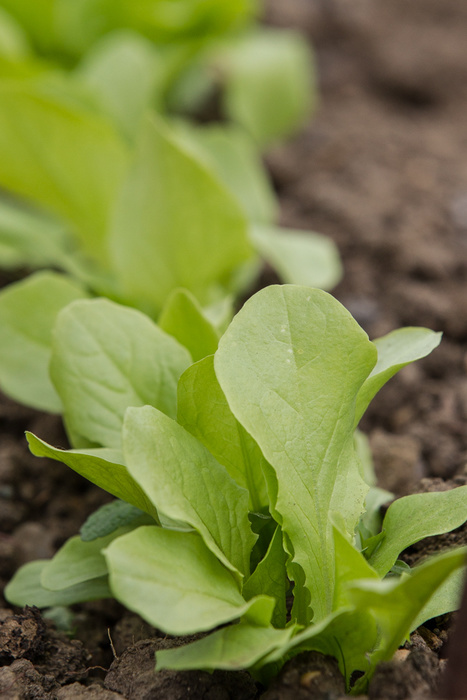
The plot is at least beginning to take shape, and thanks to the efforts of Peter Hunnable we now have a rather robust frame for the runner beans, together with a manure filled trench, and the beans were sown this weekend and heavily watered. A clutch of chrysanthemums were also planted in between the two tepee's of sweet peas, which I have to suggest look a little bedraggled. Darryl's elegant digging of the old area of brassicas has been completed for which a big thank you.
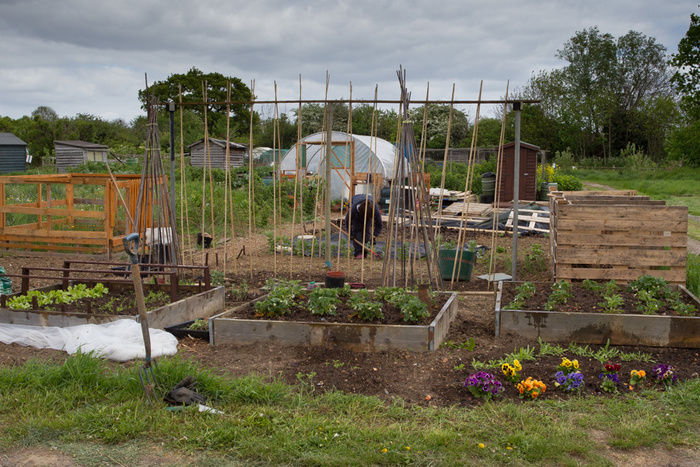
Previously rows of Turnip, Beetroot, Kohl Rabi and Parsnips were planted to compliment the rows of potatoes, together with onions and broad beans, which now means the main area of the plot which was the subject of various posts related to digging now have crops in situ.
The Strawberries, which looked a little thin seem to have blossomed, have flowers and fruit developing, and I was suitably proud to identify that various potatoes have now sprung into life (only to be advised that this was no big deal and these were easy to grow, in fact they'll grow without much input).
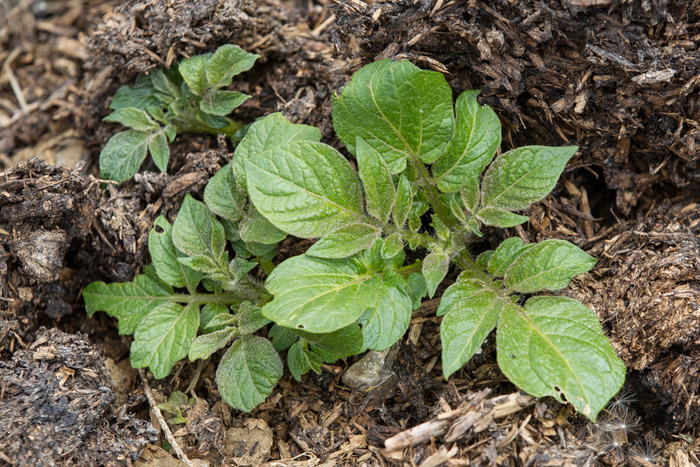
The poly tunnel has a few tomato plants, and the sowing of the Oriental or jungle seeds deliberately left until after we returned home and the airing cupboard has duly been evacuated to accommodate.
Finally it seems that we may have some 'magic' carrots, as it appears that we have some sprouters some distance from where we originally deposited the seed, and some appear to have hopped the confines of the raised beds.
Just a reminder that this project is being run by the Allotment Association, with the produce grown being donated to charity. If you feel that you have some capacity to assist or help out, or would be interested in participating, please do not hesitate to contact Karen or Ray,
project 63.
17th May 2016
In: Project 63
Met with a swathe of green when returning from a couple of weeks well earned R&R, was a little blue to find that the allotment keepers consistent invader (weeds) accounted for the majority of the covering, and the carefully turned over plot needed some pretty urgent thinning, - actually removing - of all the offending growth. Such was the prolific spread, it took a little time to realise that amongst this there were some carrots that protruded, and most pleasing the Celtuce that had been sown had seriously come good. (more about Celtuce to follow)

The plot is at least beginning to take shape, and thanks to the efforts of Peter Hunnable we now have a rather robust frame for the runner beans, together with a manure filled trench, and the beans were sown this weekend and heavily watered. A clutch of chrysanthemums were also planted in between the two tepee's of sweet peas, which I have to suggest look a little bedraggled. Darryl's elegant digging of the old area of brassicas has been completed for which a big thank you.

Previously rows of Turnip, Beetroot, Kohl Rabi and Parsnips were planted to compliment the rows of potatoes, together with onions and broad beans, which now means the main area of the plot which was the subject of various posts related to digging now have crops in situ.
The Strawberries, which looked a little thin seem to have blossomed, have flowers and fruit developing, and I was suitably proud to identify that various potatoes have now sprung into life (only to be advised that this was no big deal and these were easy to grow, in fact they'll grow without much input).

The poly tunnel has a few tomato plants, and the sowing of the Oriental or jungle seeds deliberately left until after we returned home and the airing cupboard has duly been evacuated to accommodate.
Finally it seems that we may have some 'magic' carrots, as it appears that we have some sprouters some distance from where we originally deposited the seed, and some appear to have hopped the confines of the raised beds.
Just a reminder that this project is being run by the Allotment Association, with the produce grown being donated to charity. If you feel that you have some capacity to assist or help out, or would be interested in participating, please do not hesitate to contact Karen or Ray,
project 63.
Trading Hut Open Wednesday Evening
09th May 2016

The additional opening of the trading hut on a Wednesday evening last year proved reasonably successful, and as last year 'Have I got a deal for you Dave' will be manning the Allotment Association Trading Hut on Wednesday Evenings from 18th May. Intention is to keep the hut open between the hours of 6pm and 7pm until further notice, and your support of the Association would be truly appreciated.
09th May 2016

The additional opening of the trading hut on a Wednesday evening last year proved reasonably successful, and as last year 'Have I got a deal for you Dave' will be manning the Allotment Association Trading Hut on Wednesday Evenings from 18th May. Intention is to keep the hut open between the hours of 6pm and 7pm until further notice, and your support of the Association would be truly appreciated.
Allotment Competition 2016
20th April 2016
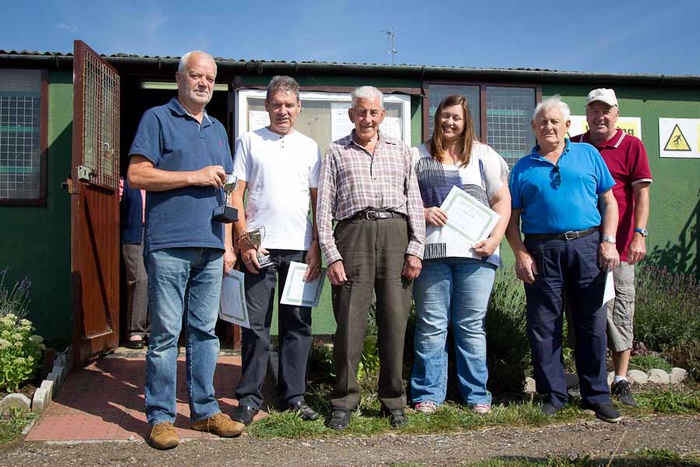
The Annual Melbourne Park Allotment Association plot holder competition will be judged on Monday July 18th. Our Judge, Mr Clive Emberson from Hatfield Peveral Horticultural Society is a recognised Horticultural Association judge and has agreed to give us his view this year.
There are two categories as usual, a competition for those who have held a plot for less than 18 months, and one for longer term members.
There are only a couple of rules of engagement: Your plot must be clearly identified with your plot number displayed (so we don't have to go squirrelling around finding out which belongs to who) and you must be a paid up Association Member (a very reasonable fee of £2/- per annum).
The accompanying image shows last years award winners, and we wish everyone all the very best come the day.
20th April 2016

The Annual Melbourne Park Allotment Association plot holder competition will be judged on Monday July 18th. Our Judge, Mr Clive Emberson from Hatfield Peveral Horticultural Society is a recognised Horticultural Association judge and has agreed to give us his view this year.
There are two categories as usual, a competition for those who have held a plot for less than 18 months, and one for longer term members.
There are only a couple of rules of engagement: Your plot must be clearly identified with your plot number displayed (so we don't have to go squirrelling around finding out which belongs to who) and you must be a paid up Association Member (a very reasonable fee of £2/- per annum).
The accompanying image shows last years award winners, and we wish everyone all the very best come the day.